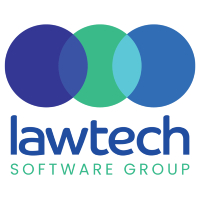 By Legal Futures Associate Lawtech Software Group
By Legal Futures Associate Lawtech Software Group
Technology continues to play a significant role in the growth and development of the legal sector. The demand for innovative technology is strong and its adoption within law firms shows no sign of slowing down. Digital ID verification technology in particular is becoming more widely used and it’s proving more reliable and quicker. As ID technology becomes more common, public institutes and regulators are increasingly putting in their own standards. One in particular many in the legal sphere should understand is the Digital ID Standard as set out by the HM Land Registry.
The importance of this standard cannot be overstated, so with this in mind, let’s delve deeper. This is your comprehensive guide to The Digital Identity Standard and the “Safe Harbour” it offers.
Here, we analyse what the standard is and why it’s an important factor for law firms.
What is HM Land Registry’s Digital Identity Standard?
As the register of land and property in England and Wales, The Land Registry is inherently at risk of money laundering. To minimise this risk, they wanted to ensure there is standard where lawyers and conveyancers have peace of mind while they fulfil their duty on identity verification.
This peace of mind comes in the form of an alternative higher standard of identity checking. Broken down, this means that for every verification which is carried out, a biometric and cryptographic element must be incorporated in the process. The reason behind the inclusion of these two elements is key for two key reasons.
The first being that through a biometric scan of both the facial image in the document and the face itself, systems can determine whether the individual is legitimate or not. The second key reason is that setting the higher standards of an area of law which is more susceptible to fraud and ensuring system providers offer more than the bare minimum in terms of client AML and ID verifications.
What are the requirements to reach Safe Harbour compliance?
“Safe Harbour” refers to the status that is achieved when the steps laid out in the Digital ID Standard are followed. The process to reach safe harbour compliance is straightforward. There are four key steps that must be met to ensure that lawyers and conveyancers can achieve this status.
Obtain evidence from your client – Ensure that your client provides you original photographic ID documents. This needs to be in date and valid, it cannot be a photocopy.
Check the documents – The client has an identification document that can be checked cryptographically. This includes passports because of the “Near Field Chip” (NFC) in it.
Ensure the document belongs to your client – Systems and processes need to ensure the documents presented by an individual are genuine and not fraudulent. Utilising the cryptographic features within the documentation, a system should be able to read these features and confirm the validity of the document and biometrical link it to the client.
Ensure you can link the client to the address – A lawyer must be able to match the client to their address and prove ownership through two or more independent sources. A Utility bill, electoral roll or a bank statement will more than suffice here.
The guidelines provided in the Digital ID framework, while not mandatory, present conveyancers with a chance to achieve heightened security against fraud. Digital authentication technologies, for example Verify 365, are increasingly embraced and becoming standard across numerous legal firms. Therefore, neglecting these systems in client anti-money laundering (AML) and identity verification processes could expose solicitors to the risks of fraud and money laundering.
Moreover, these innovative ID/AML verification solutions are not solely beneficial for conveyancing solicitors. The Land Registry has devised its standard in collaboration with the legal sectors of England and Wales and the Solicitors Regulation Authority (SRA), signalling that lawyers throughout the profession should anticipate and prepare for akin advancements shortly. Having this Safe Harbour protects lawyers and firms from recourse from both their clients and the HM Land Registry in regard to identity confirmation.
How does Verify 365 help lawyers, solicitors and conveyancers achieve Safe Harbour compliance?
Verify 365 incorporates all the technology required to reach safe harbour compliance while also generating effective, concise reports. Verify 365 speeds up the whole client onboarding and identification process while ensuring compliance with the Digital ID Standard and the regulatory framework set by authority figures.
As a leading technology figure within the legal sector, Lawtech Software Group were delighted to see Verify 365 become the first innovative legal tech product to comply with the Safe Harbour standard requirements and integrate NFC reading into their platform.
Verify 365 is uniquely positioned as the best AML technology platform for law firms facing the increasing scrutiny and potential fines for Anti-Money Laundering non-compliance by the Solicitors Regulation Authority.
Our client onboarding platform offers an unparalleled technology tailored to the specific needs of law firms, conveyancers and estate agents, ensuring compliance while enhancing client onboarding and due diligence processes. Our platform is effective, reliable and enables firms to concrete on their core legal work knowing the checks they complete are not only compliant but consistently achieving the necessary safe harbour standards.












